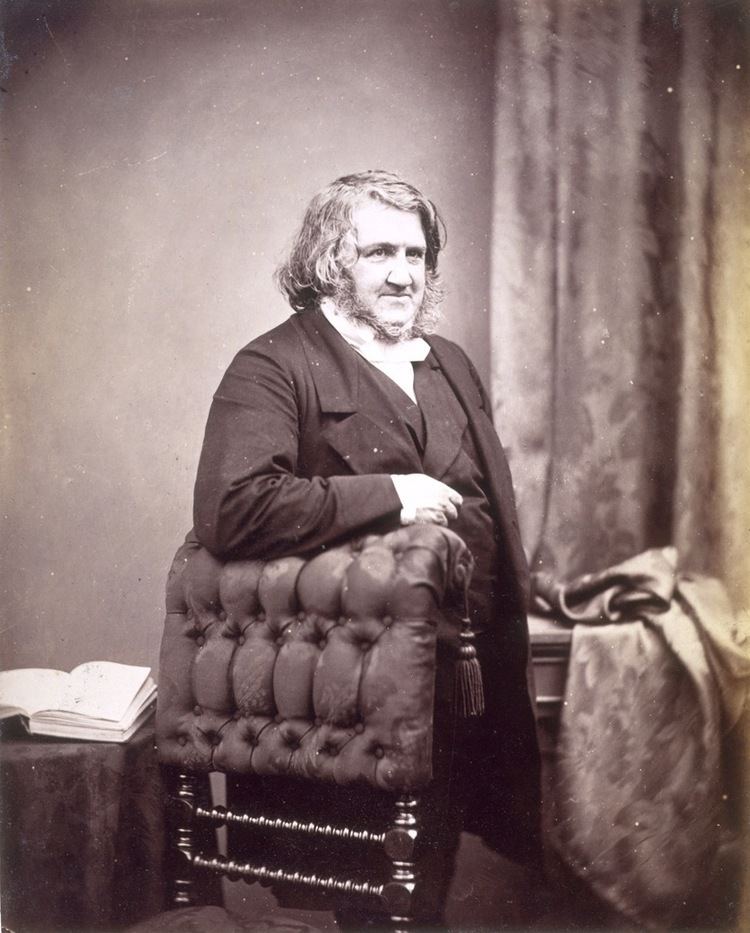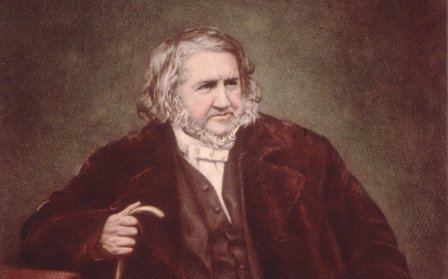Name James Simpson Role Medical Doctor | Children Eve Blantyre Simpson | |
 | ||
Died May 6, 1870, Edinburgh, United Kingdom Books Archaeological Essays, The Cat‑Stane - Edinburg, Hermaphroditism, Homoeopathy: Its Tenets and Tend Similar People Joseph Lister, Robert Liston, Lawson Tait, Kirkpatrick Macmillan | ||
James young simpson a new world is born
Sir James Young Simpson, 1st Baronet (7 June 1811 – 6 May 1870) was a Scottish obstetrician and a significant figure in the history of medicine. Simpson was first to demonstrate the anaesthetic properties of chloroform on humans and helped to popularise the drug for use in medicine.
Contents
- James young simpson a new world is born
- Medical history sir james young simpson chloroform
- Career
- Obstetric anaesthesia
- Death and memorials
- References

Medical history sir james young simpson chloroform
Career

Simpson completed his final examination at the age of 18 but, as he was so young, had to wait two years before he got his licence to practise medicine. He graduated from the University of Edinburgh Medical School in 1832 and as a student became a member and then Senior President of the Royal Medical Society, initiating a lifelong interest in the Society's advancement. In 1838 he designed the Air Tractor, the earliest known vacuum extractor to assist childbirth but the method did not become popular until the invention of the ventouse over a century later.

At the age of 28 he succeeded Prof James Hamilton as Professor of Medicine and Midwifery at the University of Edinburgh. He improved the design of obstetric forceps that to this day are known in obstetric circles as "Simpson's Forceps". His most noted contribution was the introduction of anaesthesia to childbirth.
Simpson's intellectual interests ranged from archaeology to an almost taboo subject at the time: hermaphroditism. He was a very early advocate of the use of midwives in the hospital environment. Many prominent women also consulted him for their gynaecological problems. Simpson wrote Homœopathy, its Tenets and Tendencies refuting the ideas put forward by Hahnemann.
It was his achievements and wide ranging interests that led to his town house at 52 Queen Street, Edinburgh being a gathering point for many members of society, especially intellectuals. His impish sense of humour got the better of him on at least one of these occasions when he seated a Southern US slave owner next to a freed slave at the dinner table. Since this town house was fairly busy at times, Simpson preferred to keep his wife and children at their country house near Bathgate. In religion Simpson was a devout adherent of the Free Church of Scotland, but he refused to sign the Westminster Confession of Faith, because of what he believed to be its literal interpretation of the book of Genesis.
Simpson was a close friend of Sir David Brewster, and was present at his deathbed.
Obstetric anaesthesia
Sir Humphry Davy used the first anaesthetic in 1799: nitrous oxide (laughing gas). William T. G. Morton's demonstration of ether as an anaesthetic in 1846 was initially dismissed because it irritated the lungs of the patients. Chloroform had been invented in 1831, but its uses had not been greatly investigated. Dr Robert Mortimer Glover had first described the anaesthetic properties of chloroform upon animals in 1842 in a thesis which won the Harveian Society's Gold Medal that year, but had not thought to use it on humans (fearing its safety).
In 1847, Simpson first demonstrated the properties of chloroform upon humans, during an experiment with friends in which he learnt that it could be used to put one to sleep. Dr Simpson and two of his assistants, Drs George Skene Keith (1819-1910) and James Matthews Duncan (1826-1890), used to sit every evening in Dr Simpson's dining room to try new chemicals to see if they had any anaesthetic effect. On 4 November 1847 they decided to try a ponderous material named chloroform that they had previously ignored. On inhaling the chemical they found that a general mood of cheer and humour had set in. But suddenly all of them collapsed only to regain consciousness the next morning. Simpson knew, as soon as he woke up, that he had found something that could be used as an anaesthetic. They soon had Miss Petrie, Simpson's niece, try it. She fell asleep soon after inhaling it while singing the words, "I am an angel!". There is a prevalent myth that the mother of the first child delivered under chloroform christened her child "Anaesthesia"; the story is retailed in Simpson's biography as written by his daughter Eve. However, the son of the first baby delivered by chloroform explained that Simpson's parturient had been one Jane Carstairs, and her child was baptised Wilhelmina. "Anaesthesia" was a nickname Simpson had given the baby.
It was very much by chance that Simpson survived the chloroform dosage he administered to himself. If he had inhaled too much and died, chloroform would have been seen as a dangerous substance, which in fact it is. Conversely, if Simpson had inhaled slightly less it would not have put him to sleep. It was his willingness to explore the possibilities of the substance that set him on the road to a career as a pioneer in the field of medicine.
An account of some of Simpson's early uses of ether in childbirth are related by Manchester-based doctor Edmund Lund who visited him in 1847 and can be found in a manuscript held by special collections at the University of Manchester with the reference MMM/12/2.
Death and memorials
Simpson was elected President of the Royal College of Physicians of Edinburgh in 1850 and created a Baronet of Strathavon in the County of Linlithgow, and of the City of Edinburgh, in 1866. He died at his home in Edinburgh in May 1870 at the age of fifty-eight. A burial spot in Westminster Abbey was offered to his family, but they declined and instead buried him closer to home in Warriston Cemetery, Edinburgh. However, a memorial bust can be found in a niche at Westminster Abbey in London. On the day of Simpson's funeral, a Scottish holiday was declared, including the banks and stock markets, with over 100,000 citizens lining the funeral cortege on its way to the cemetery, while over 1,700 colleagues and business leaders took part in the procession itself.
Dr Alexander Russell Simpson, his nephew, inherited his town house at 52 Queen Street and lived there until his death in 1916, when it was then bequeathed to the Church of Scotland. Since then the building has been through many uses including being requisitioned by the army during the Second World War and being used as a centre for training Sunday School teachers in the 1950s. Today, the town house is the premises of a charity called Simpson House, which provides a counselling service for adults and children affected by alcohol and drug use. There is a plaque on the wall outside to mark the house as having been the home of James Young Simpson from 1845 to 1870.
The Quartermile development, which consists of the Old Royal Infirmary in Edinburgh, named its main residential street Simpson Loan in his honour.
